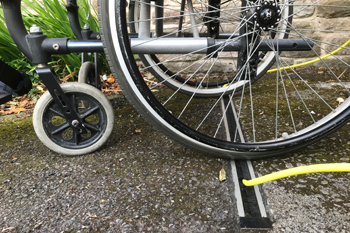
Local authorities are under pressure to install more public charging points as the 2030 deadline for the last petrol and diesel cars fast approaches. Lamp posts are proposed as ready-made charge points, but they are often sited on the ‘wrong’ side of the pavement.
Other charge points that pop up from below ground have been proposed, but they are costly to install, and create a new hazard for the partially-sighted to navigate. But there is an alternative strategy that better meets the real needs of EV drivers, makes better use of existing infrastructure, and makes better use of green energy – and that is to facilitate home charging.
A typical electric car travels about four miles on one kilowatt-hour of electricity, meaning that a domestic 7kW charger (no more powerful than an electric shower) can add 28 miles (of range) per hour. So, four hours of cheap overnight off-peak electricity can add more than 100 miles of range. That is four times the UK average daily mileage (8,000 miles per year is only 22 miles per day). Even a domestic 13amp socket working at 2kW is capable of adding around 30 miles in four hours.
Overnight charging has many advantages; it makes the best use of wind power, avoids adding to the early morning and evening peak load on the national grid, and so reduces the need for additional generating capacity. As a result, overnight electricity is charged at around a quarter of the cost per unit of public chargers, and owners can recover the outlay of the charge point in reduced running costs.
Being able to arrive home and plug in the car, knowing that it will wait for the off peak period to begin charging, while you get on with your home life, easily beats having to locate a public charge point (one that is not out of service, and not already occupied). It also beats your having to kill time during charging until you can drive on - without overstaying and blocking others from using the charge point.
While a car is plugged in at home it becomes available to earn money from the new ‘Vehicle to Grid’ system whereby suitably equipped cars can make some of their battery capacity available to feed back into the grid at peak times. Just a few kilowatt hours taken from each of thousands of cars could make a big difference.
But what if you don’t have off street parking, and would need to trail a cable over the pavement?
People have used hump-backed plastic ramps to protect the cable, but they are a nuisance to baby buggies and wheelchairs, and they can blow over and become an even bigger hazard. The Dutch have come up with a costly gantry that suspends the cable over the pavement, but the most promising arrangement is a simple gulley; a low cost, quick release housing for the cable, just below the pavement surface. These look similar to the cast iron rainwater gulleys that can be seen in many urban streets, carrying rainwater from a fall pipe across the pavement into the gutter. The most obvious difference is a brush strip that retains the charging cable and stops it popping up until you want to pull it out.
Costing as little £35 per metre, why aren’t these seen everywhere?
Local authorities must devise policies to permit the installation of these devices into council-owned pavements, without risk to underlying service cables, respecting other constraints, and for a reasonable ‘licence’ fee. The pavement disturbance can be as little as 5cm x 5cm channel sawn into the pavement with an angle grinder, but implementation needs to be controlled.
The DfT and Highways England data discovery report called for greater collaboration between the 333 local authorities and 150 highways authorities. It is hoped that, rather than each devising their own policies, some centrally agreed guidance can be adopted universally, and we could then see the councils inviting residents to opt-in to a gulley installation campaign, on a street by street basis.
The many benefits of overnight home charging should not be the exclusive privilege of those who can afford a house with off-street parking.
Colin Townend, Stormguard












